First on Four Wheels
Introducing the latest generation KingQuad 750 and 500
Suzuki has been an innovator in engineering since Michio Suzuki created the company in 1909. But it was the early 1980s that saw Suzuki launch into the ATV market, with the creation of the first ever four-wheel ATV in 1983, sparking a movement away from controversial three-wheelers and leading the way for the industry. Always committed to innovation, and attentive to the needs and desires of riders, Suzuki has had a series of important firsts in the ATV market.
1983 Quadrunner
Suzuki brought the first four-wheeled ATV to the market with the release of the 1983 QuadRunner 125, 4 x 6. This original quad, with the designation LT125, positively surprised riders and dealers not only with its well-planted four-wheel chassis, but it featured an automatic clutch with five forward speeds plus reverse. The “4” in the sub-name stood for the four wheels, while the “6” represented the six speed transmission.
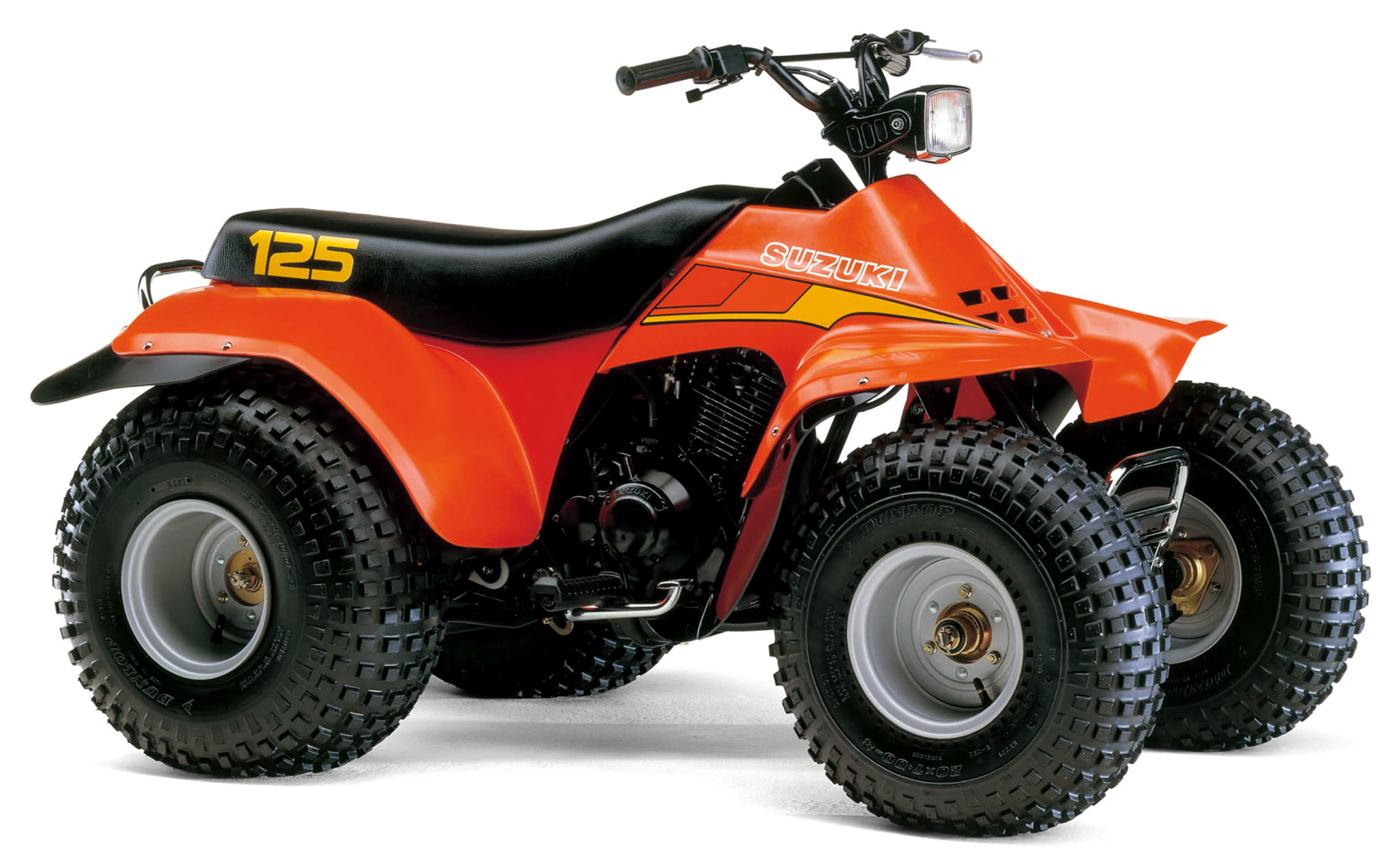
1983 QuadRunner 125
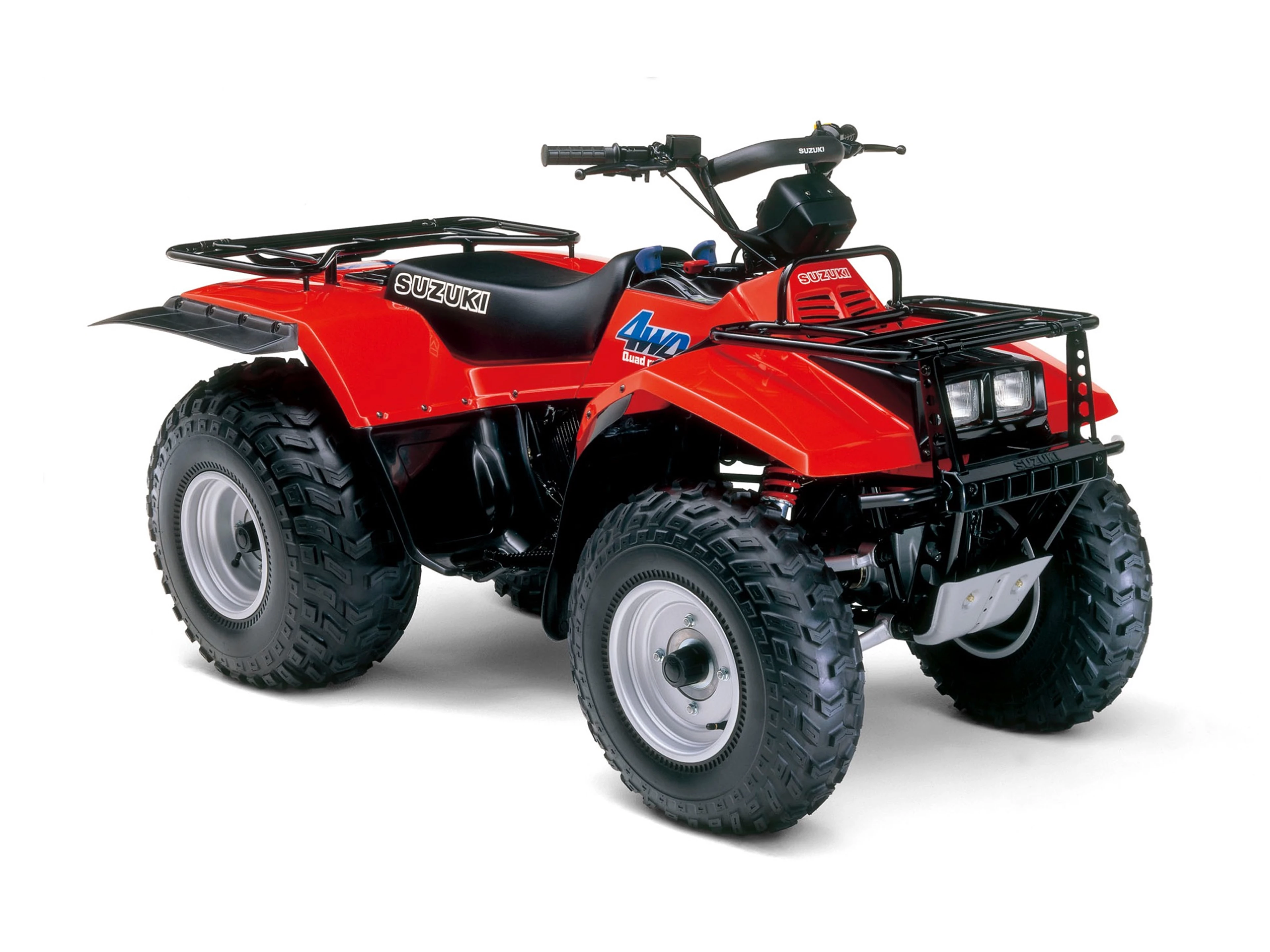
1987 QuadRunner 4WD
1987 QuadRunner 4WD
With the announcement of the 1987 QuadRunner 4WD (LT-4WD) Suzuki innovation now provided riders with terrain conquering capability never before available from an ATV. This four-wheeler, as its designation implied, had four-wheel drive. And that drive system allowed the rider to select 2WD or 4WD modes, plus it offered a front differential lock so the QuadRunner 4WD could crawl out of just about any situation. The rider could also route the power from the 246cm3 four-stroke engine through a sub-transmission that had both high and low ratios so the ATV was great on tight trails but could also get you quickly out to work on the far side of the farm. Additionally, the QuadRunner 4WD was designed with an engine configuration and fuel tank location that resulted in a comfortable and low seat height. The path forward to the KINGQUAD legacy was becoming clear.
2002 Eiger
For the 2003 model year Suzuki revised some of its ATV models to take advantage of its new manufacturing plant in Rome, Georgia and to drive awareness of its sports-utility line-up. Some of Suzuki’s sports-utility models adopted the names of famous mountains at the same time they got technical improvements. The air-oil cooled 400cm3 model, in both 2WD and 4WD versions was named the Eiger (per the famous mountain in Bernese Alps) and the larger, liquid-cooled 500cm3 4WD model was dubbed the Vinson (per the large mountain in the Antarctic). Both models became intermediate models to past and future KINGQUAD’s in both features and performance.
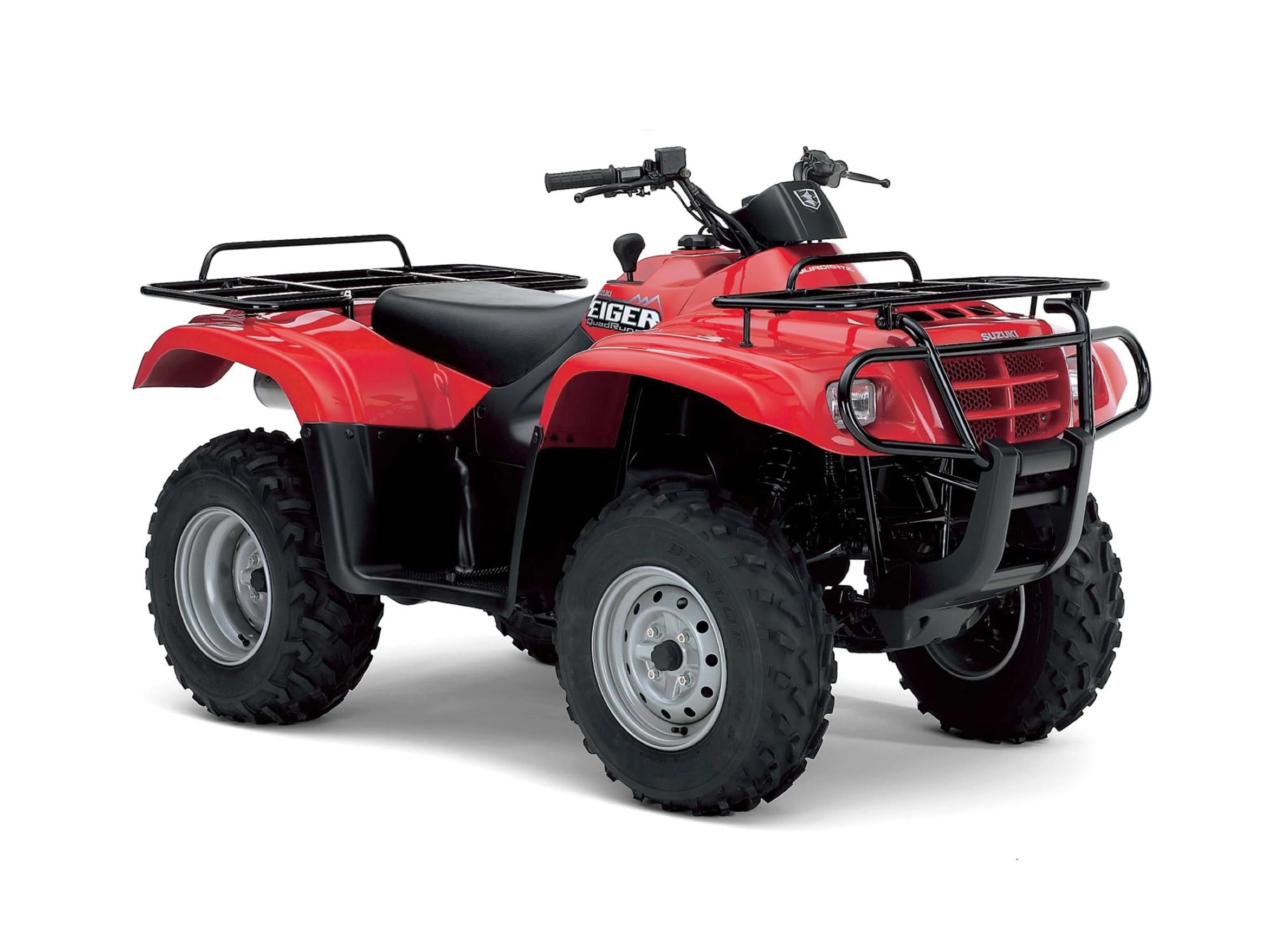
2002 Eiger
Suzuki QuadSport LT-Z400
With the 2003 Suzuki QuadSport Z400, Suzuki took advantage of its expertise in both the ATV and motorcycle worlds. This new machine combined an engine based on the proven DR-Z400E off-road motorcycle and an advanced electronic fuel injection system. The high performance 398cm3 4-stroke, liquid-cooled, DOHC single-cylinder powerplant ran through a smooth-shifting five speed transmission that also had an easy-to-use reverse system. The chassis was reminiscent of earlier QuadRacer and QuadSport designs with a long-travel double A-arm front suspension and single rear shock, aggressively-styled bodywork with high fenders, plus vents that route cooling air to the radiator. The QuadSport Z400’s balance of performance, ease of use and reliability made it a favourite among sport ATV riders world-wide.
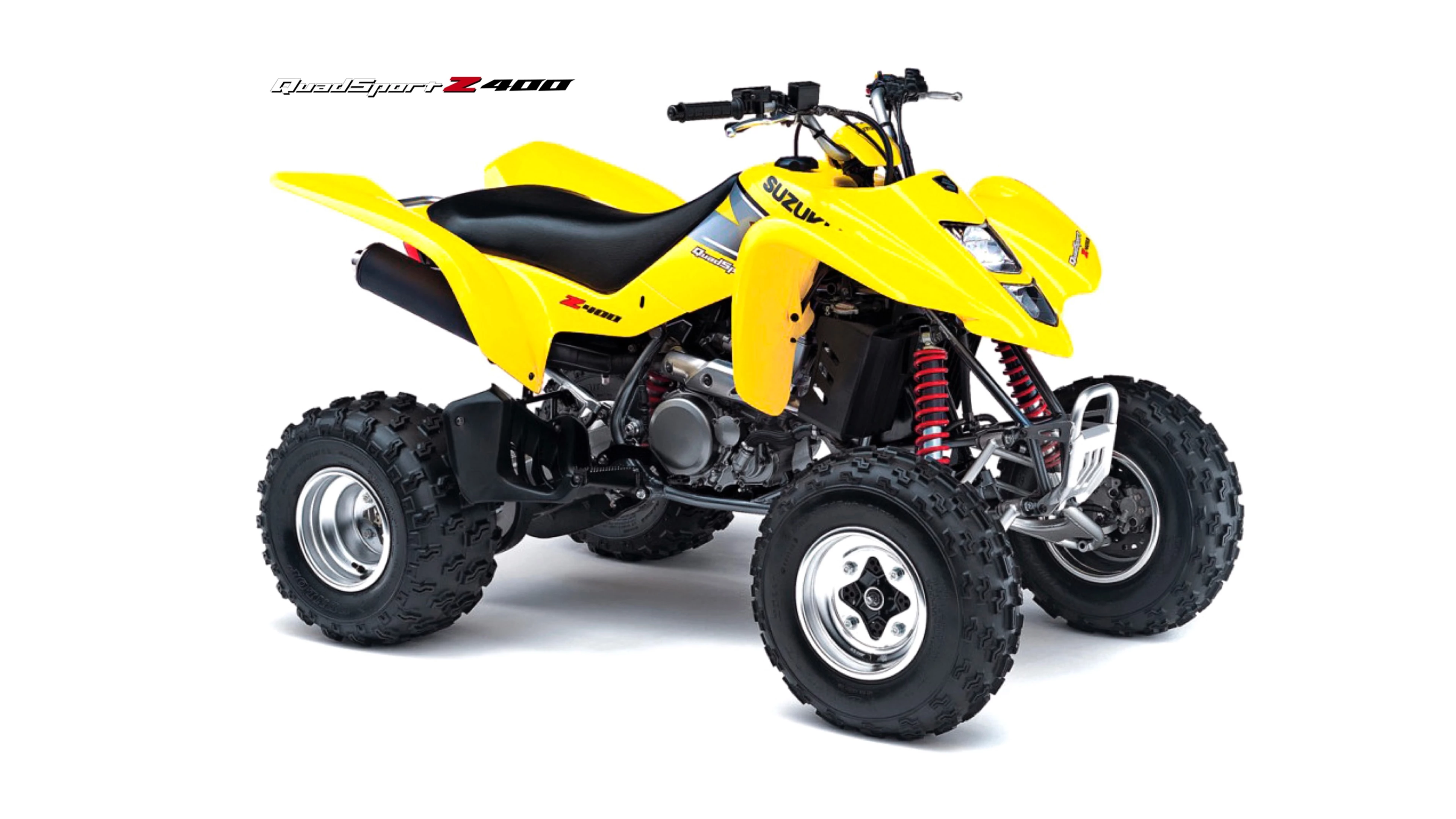
Suzuki QuadSport LT-Z400
Suzuki KingQuad
The KINGQUAD name returned to the Suzuki ATV line up with the 2005 KINGQUAD 700. Along with its revived name this new ATV brought a new liquid-cooled, four-stroke engine, fed by a first and modern electronic fuel injection system.
The KINGQUAD 700 FI 4x4 engine was canted forward at a 48-degree angle to help the ATV maintain optimum weight balance and efficient air-intake design. The 700’s chassis featured fully independent suspension with dual disc brakes up front and a wet, multi-plate style rear brake that delivered longevity and superb stopping performance in all types of riding conditions.
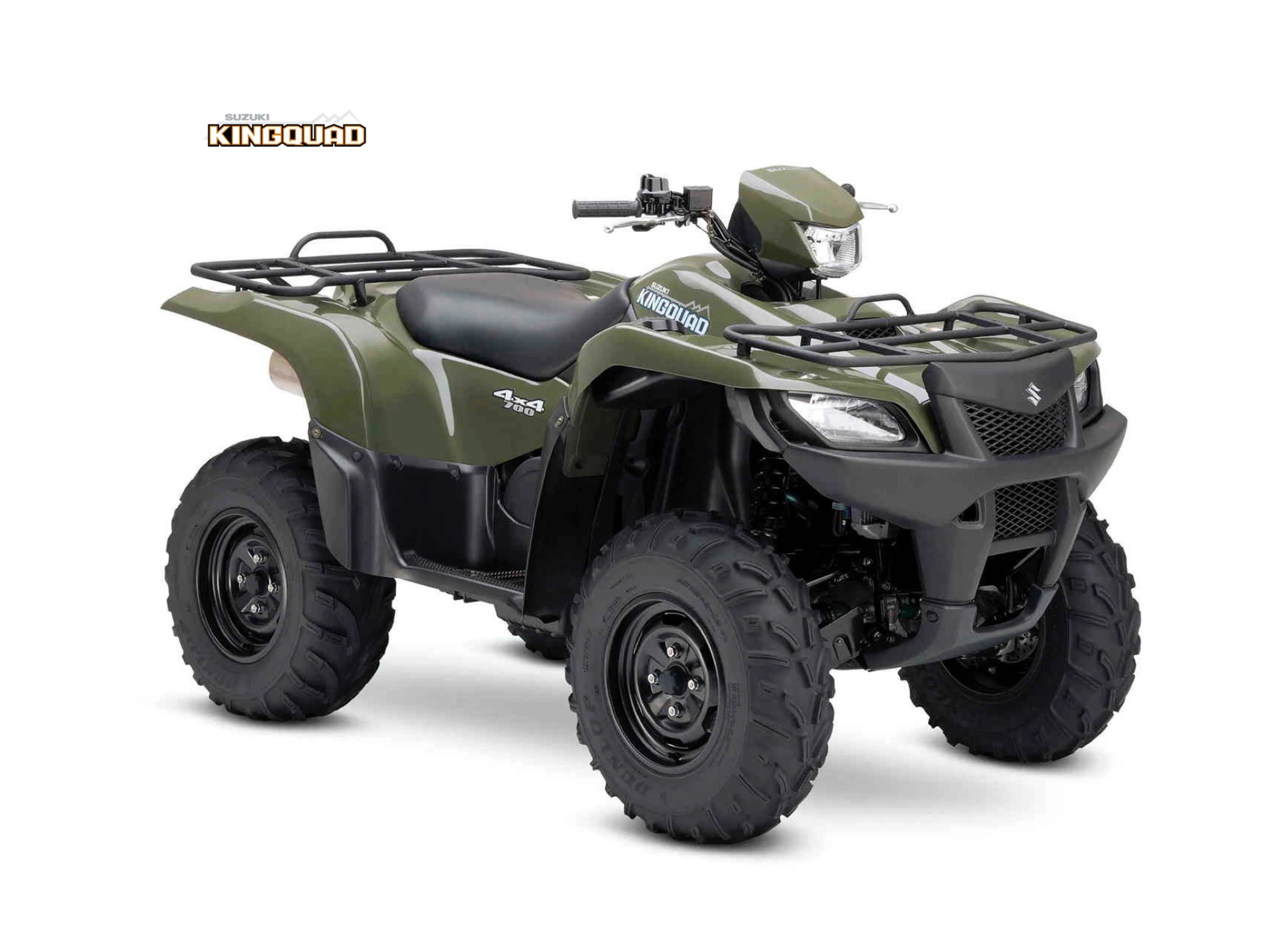
2005 KingQuad 700
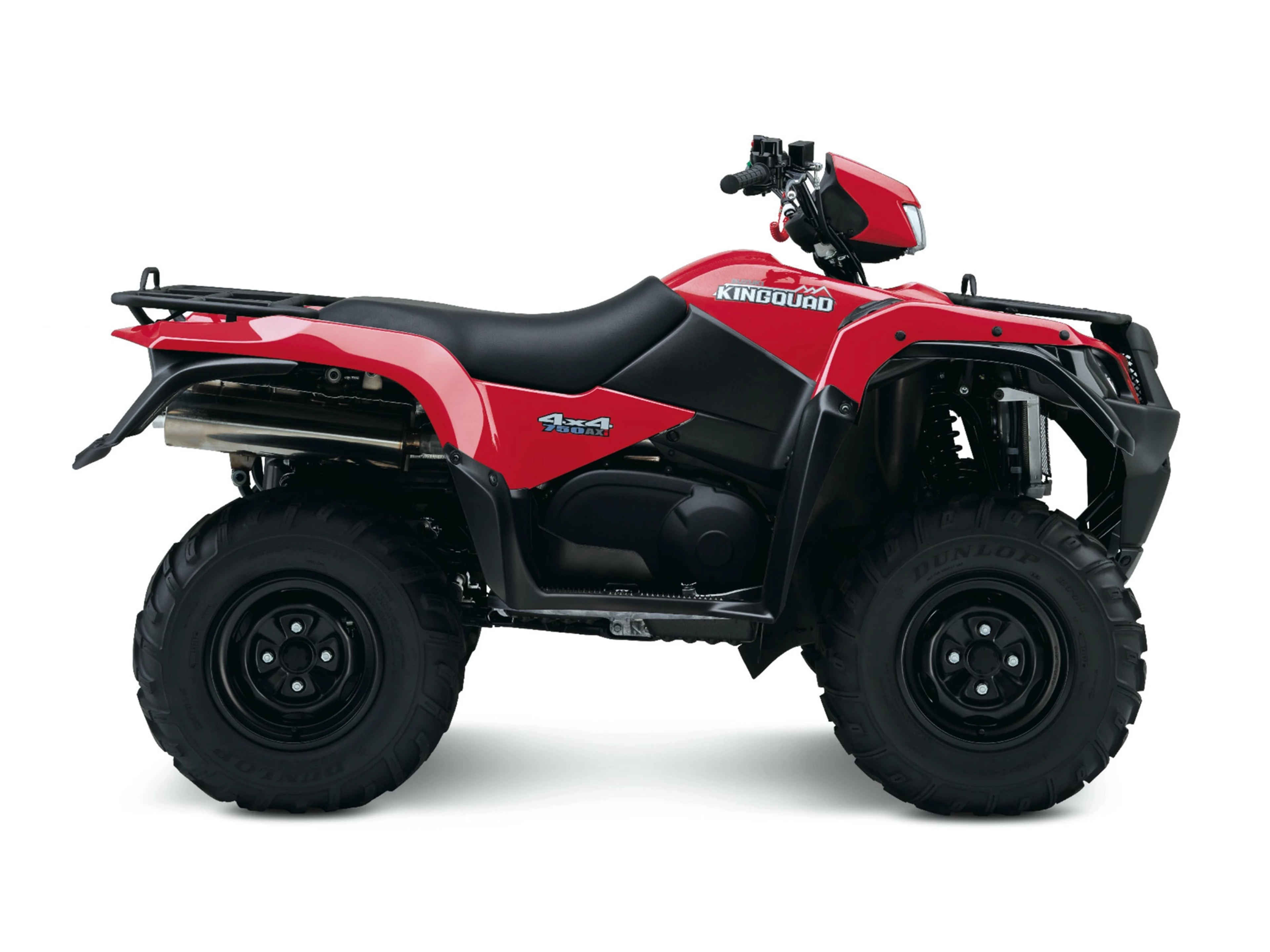
2012 KingQuad 750
2012 KingQuad 750
For 2009, Suzuki added both a KINGQUAD 750AXi 4x4 and KINGQUAD 500AXi 4x4 model with standard electronic power steering. A novel feature at the time, this system used a version of the proven technology featured on Suzuki’s cars and SUVs. Designed to reduce steering effort for the rider, Suzuki’s power steering system also damps vibration to help deliver a more comfortable ride. Basically the power steering unit senses torque loads at both ends of the steering – input from the handlebar and the resistance from the tires. The unit then senses the amount of effort needed to twist the handlebars, thus allowing more steering assistance from the unit at slower speeds and less at higher speeds to reduce the amount of leverage the rider must use to turn the ATV.
2019 Suzuki KingQuad 750
The KingQuad models have proved hugely popular across the world, proving their performance reliability time and time again for many years. The most innovative and exciting Suzuki ATVs to date were introduced in 2019. The latest generation KingQuad 750, 500 power steering and 500 really are the King of Quads. Built tough for every ride, they are the result of 30 years of engineering expertise, and boast a huge variety of class-leading features and technology.
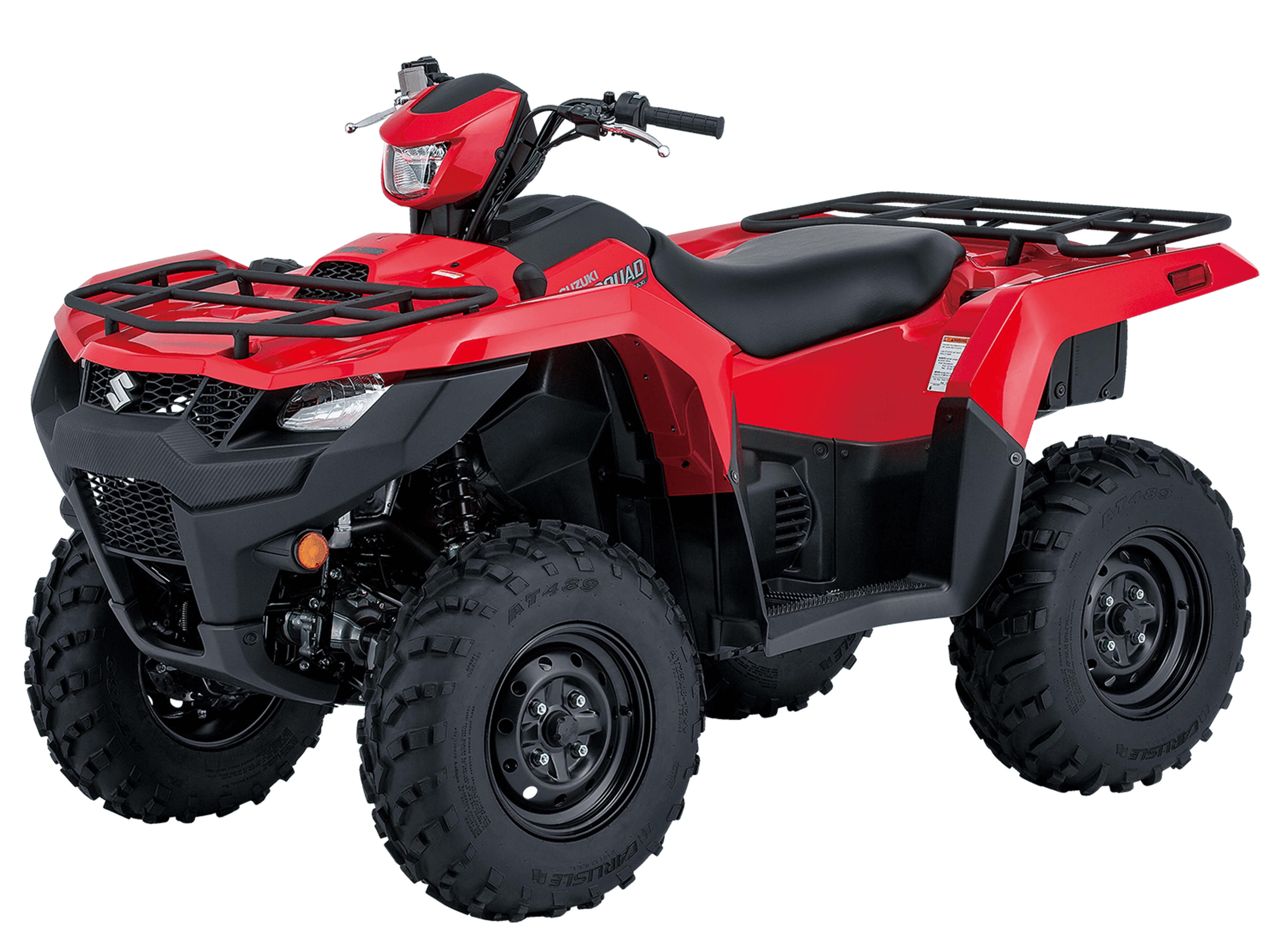
New Suzuki KingQuad 750
